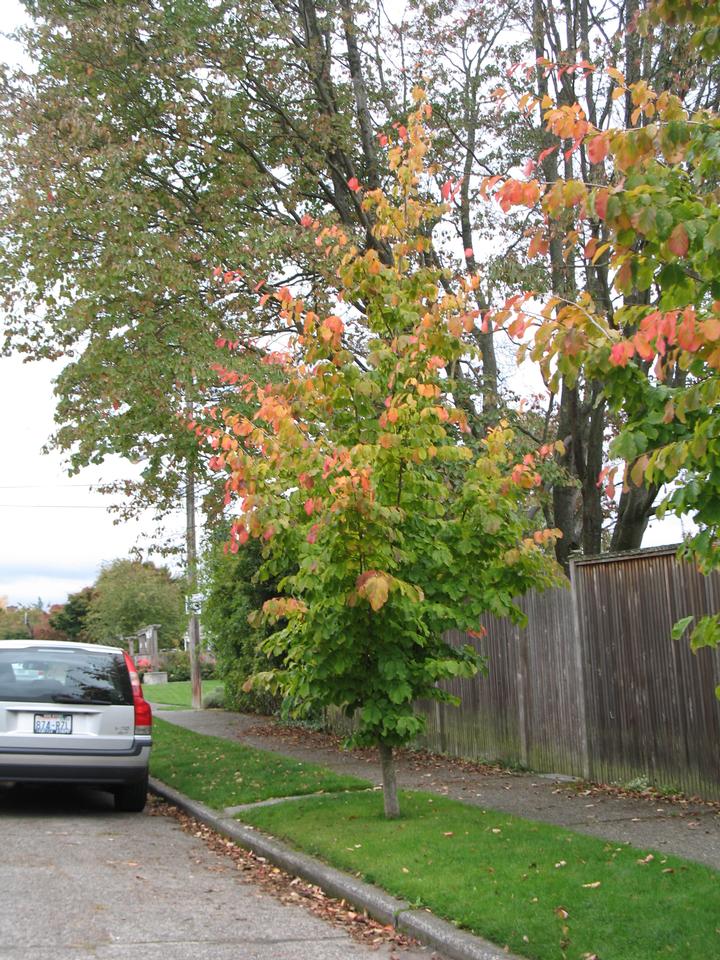Parrotia, Persian
Parrotia persica
Hamamelidaceae - Witch-hazel
Description
Leaves: Alternate; simple; 1-1/2" to 3" wide, 3 to 5" long; deciduous; oval to obovate; coarse teeth mostly on the upper half of the blade; dark green to purplish to red in summer; glabrous above and slightly hairy below; petioles short; fall color yellow to orange to red.
Twigs/buds: Twigs slender; gray-brown; hairy at first becoming glabrous later. Vegetative buds 1/4" long, stalked, with 2 finely hairy, brown scales; flower buds round, dark, hairy.
Flowers/fruit: Flowers perfect, somewhat showy stamens (no petals), red; bloom before leaves emerge in April. Fruit a 3/8" to 1/2" wide, 2-celled, dry capsule; brown.
Bark: Very ornamental on older branches and trunks; thin; peels off, leaving gray, white, green, and brown patches; similar to Pinus bungeana.
Wood: Strong and hard; sometimes called Persian ironwood.
General: Native to Iran; not utah. Tolerant of a variety of conditions including some drought, but not poor drainage. Medium-sized (up to 40' tall and 20' to 30' wide); single trunk or multi-stemmed. Intermediate shade tolerance.
Landscape Use: A medium-sized tree that should be planted more in Utah; very ornamental for foliage and bark. I have just seen a couple in Utah. Supposed to be very tolerant of urban conditions; fairly pest-free; good street tree. Zones 5(4?)-8.
Cultivars: 'Biltmore', Horizontalis', 'Pendula', 'Ruby Vase', 'Vanessa'.
Characteristics
General
| Family | Hamamelidaceae - Witch-hazel |
|---|---|
| Cultivar Availability | Yes |
| Hardiness Zone | 5-8 |
| Type | Broadleaf |
| Utah Native | No |
Growth
| Growth Rate | Medium |
|---|---|
| Mature Height | Medium |
| Longevity | High |
| Is Good Under Power Lines | No |
| Crown Shapes | Oval |
Ornamental
| Bark | Yes |
|---|---|
| Fall Color | Yes |
| Flowers | Yes |
| Foliage | Yes |
| Fruit | No |
Tolerance
| Shade | Medium |
|---|---|
| Salt | Medium |
| Drought | High |
| Poor Drainage | Medium |
| Alkalinity | High |
| Transplanting | High |







